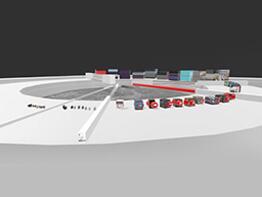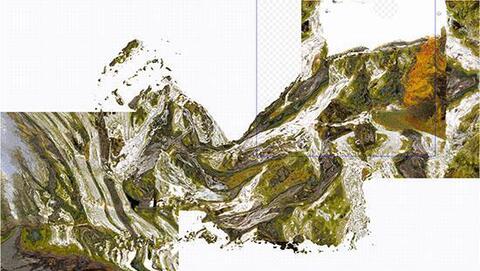
Textures électroniques
Rencontre. Artistes, chercheuses, chercheurs et scientifiques partagent leurs recherches sur les nouvelles matérialités du numérique en apportant un regard critique sur le progrès technologique.
-
Le 25 mai. 2023
-
11:00 - 18:00
-
Amphithéâtre Farabeuf, Campus des Cordeliers, Paris 6e
Textures électroniques, autour des nouvelles matérialités du numérique
Textures Électroniques est un symposium qui rassemble des artistes, chercheuses, chercheurs et scientifiques pour partager leurs recherches sur les nouvelles matérialités du numérique. Chaque intervenante et intervenant apporte un regard critique sur le progrès technologique en explorant les textures visuelles ou sonores de son domaine d'expertise. Ils invitent les participantes et participants à une réflexion imagée sur la substance même et le rôle des médiums qui composent notre monde virtuel, tout en offrant des outils pour mieux comprendre leur impact dans notre vie quotidienne. Textures Électroniques donne à découvrir et explorer nos virtualités à travers des perspectives pluridisciplinaires pour une compréhension approfondie de leur rôle dans notre société.
Rencontre en français et en anglais animée par Kaspar Ravel, artiste, et Larisa Dryansky, historienne de l'art à la faculté des Lettres.
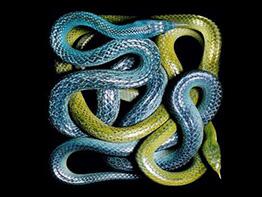
11h15 - La boîte à serpent : un chemin d'images pour l'analyse des faits d'affects et des conceptions de la personne dans un monde technologique
Arthur Perini, scénographe, plasticien et auteur-médiateur. À partir d'un montage mnémosyne autour de l'image d'une boîte à serpent, nous proposerons une relecture critique et poétique des dispositifs techniques contemporains. Le support imaginé, volontairement précaire face à l'arsenal polémique des discours technologiques, permettra de saisir le déplacement des points de fusion et des lignes fuites où s'inscrivent nos liens existentiels et émotionnels d'avec ce que l'on nomme encore « le numérique ».
14h - Extrapolation & co-création : perspectives pour un machine learning créatif
Axel Chemla-Romeu-Santos, chercheur. Bien que plus en plus présente dans nos médias et dans notre culture, l’utilisation des intelligences artificielles (IA) dites « génératives » reste ancrée autour de la simulation du réel, restreignant non seulement le développement d’une esthétique propre mais aussi la coopération avec les processus artistiques humains. Une autre approche, expérimentale, collaborative et ouverte est-elle possible ? Et si nous nous intéressions à leurs propriétés, accidentelles ou heuristiques, pour poser les bases d’une autre utilisation ?
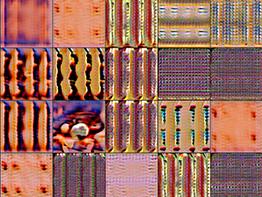
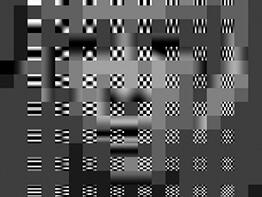
14h45 - Over a decade of Glitch: becoming language.
Rosa Menkman, artist. First there is the moment the glitch happens, which is often experienced as an uncanny break of an expected technological flow or threatening loss of control. In this moment, the user or spectator doesn’t know what to expect next. This loss of control soon becomes a catalyst with a certain power as the glitch passes a tipping point. After its tipping point, the glitch is either understood as a failure, or as a development that forces new knowledge onto the user about their presumptions of the technology, or the technologies actual functioning. In case of the latter, the glitch can force the user to reconsider their habitual use of the technology. After this experience of rupture, the glitch thus moves beyond its sublime momentum and vanishes into a realm of new conditions; it becomes a new mode - either technologically or aesthetically -, while its previous uncanny encounter is now an ephemeral, personal experience of a machine.
During this talk, Menkman will reflect on what has changed within the ecologies of glitch and what has stayed the same.
15h45 - Understanding digital materiality : between representation and presentation
Doreen A. Rios, artist. For almost 30 years the consumption, creation and distribution of digital material among the masses has been made possible through the Internet. This has meant that, as proposed by urban design theorist William J. Mitchell, the World Wilde Web has taken charge of “replacing spaces, reconfiguring the social body and the architectural contexts.” (Mitchell 2003). Adopting Mitchell’s position and thinking, we are able to analyse the ways “people use the metaphors and paradigms of creating space to inform the construction of their electronic agoras” and we can recognise the Internet as “the first serious contender to do some of the things that Architecture has always done: create places to do, to see and to be seen.” (Lunenfeld 1999) Taking this reflection as a starting point, it becomes interesting for us to ask: what happens when three decades of digital materialities, that have been bound to platforms and devices, become now more than ever deeply integrated into our daily lives?
